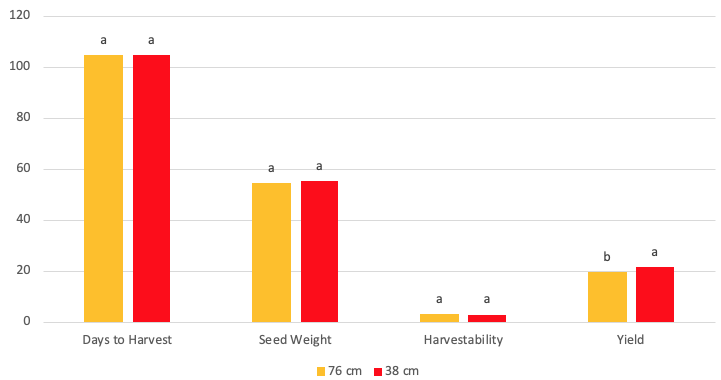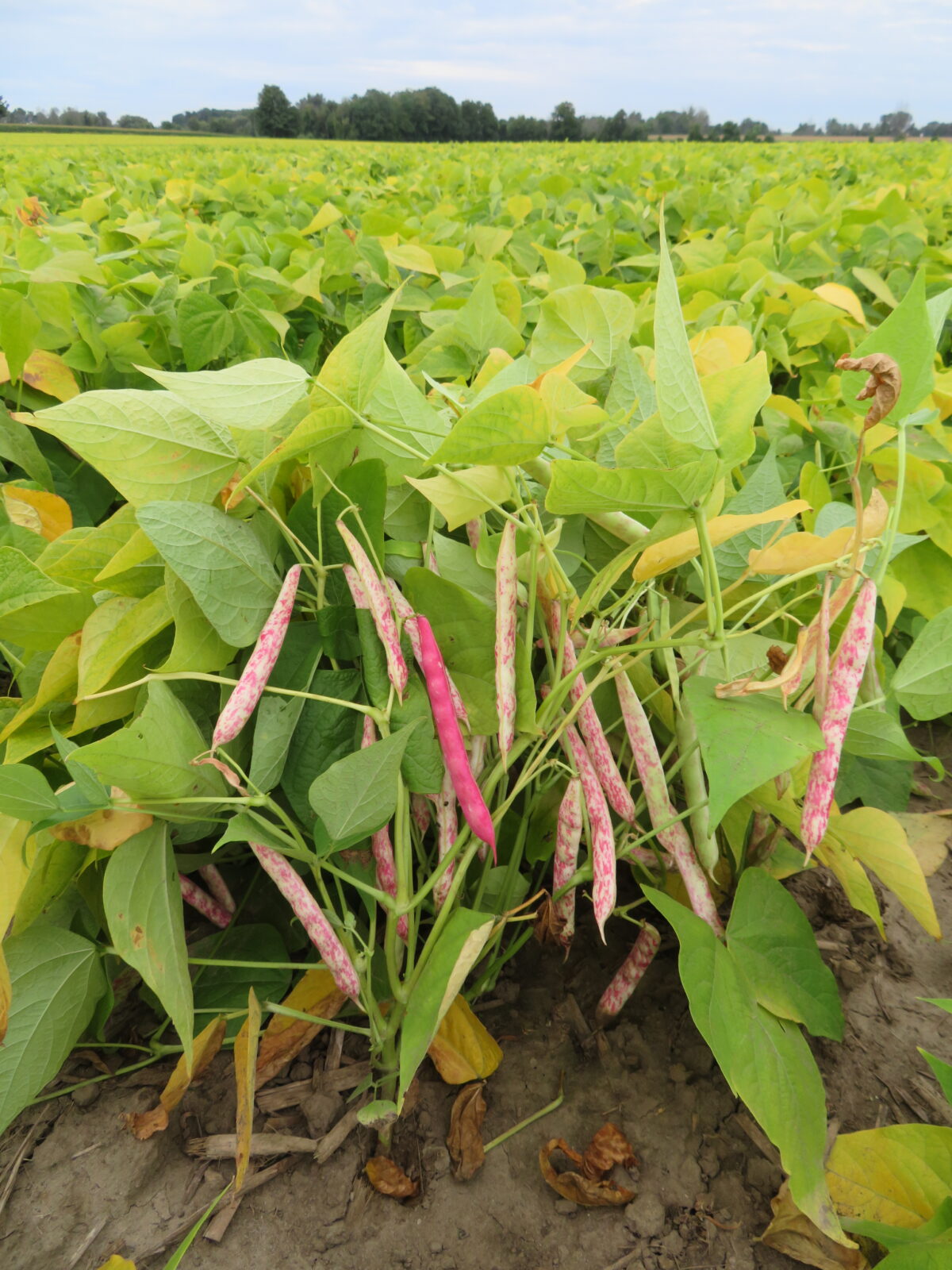The response of navy and pinto beans to narrow row production have been tested since indeterminate upright cultivars were developed in the 1980’s. Ablett (1988) found a 28% yield increase in narrow rows with high populations, but only if the plots were mechanically harvested. Six unpublished Ontario studies between 1980-1987 found an average narrow row yield advantage of 10-12%, with a high of 36%. Kidney and cranberry beans are typically grown in wide (76 cm) rows, and there have been few studies of narrow row production. The purpose of this study was to determine if there is a yield advantage to narrow row (38 cm) kidney and cranberry beans, compared to the traditional 76 cm rows.
Four small plot experiments were conducted in 2006-2007 at the Huron Research Station near Exeter ON, and a farm site near Thorndale ON. Early maturing compact cultivars of cranberry and kidney beans (Etna and Red Hawk) were compared to later maturing larger cultivars (Hooter and Red Kanner). Seed weight (g/100 seed) and yield (100 lb bags/acre) were adjusted to 18% moisture.

Narrow rows (38 cm or 15 inch) were similar to wide rows (76 cm or 30 inch) for plant maturity, seed weight and crop harvestability. In similar studies, narrow rows tend to reduce plant maturity and improve crop harvestability. There was a distinct yield advantage of 11.3% for the narrow rows, which was consistent across each cultivar tested. The results of this study led to field scale testing of narrow row kidney and cranberry bean production by at least one prominent Ontario grower.
